Dr. Ryoji Noyori, Nobel Prize in Chemistry 2001
The Nobel Prize in Chemistry for 2001 was awarded to Dr. Ryoji Noyori, Professor at Nagoya University, William S. Knowles (formerly of Monsanto Company), and K. Barry Sharpless, Professor at The Scripps Research Institute, for their work on “Catalytic Asymmetric Synthesis.”
Many organic compounds exist in mirror-image forms called enantiomers, which are like right and left hands. In living organisms, these enantiomers can have different physiological effects, with one enantiomer being a beneficial drug and the other being harmful. Traditional organic synthesis methods often produce a racemic mixture containing both enantiomers, making the separation of optically active compounds a challenging task in chemistry.
Dr. Noyori pioneered the use of transition metal complexes for asymmetric amplification, developing a variety of asymmetric catalytic reactions using transition metal complexes with the chiral ligand BINAP, particularly in the asymmetric hydrogenation of olefins and ketones.
Additionally, he discovered a novel molecular catalyst for asymmetric transfer hydrogenation, elucidating the mechanism of enantioselective amplification in the addition reaction of organozinc compounds to aldehydes and promoting its application to useful substance synthesis. Using his methods, Dr. Noyori brought innovation to the synthesis of various physiologically active substances such as terpenes, alkaloids, amino acids, antibiotics, vitamins, and nucleic acid-related substances. His groundbreaking work in the industrial production of prostaglandins, carbapenem antibiotics, quinolone antibacterial agents, and the world’s largest-scale asymmetric synthesis of the fragrance menthol has had a significant impact on the industry.
Recently, Dr. Noyori has discovered high-speed and high-productivity hydrogenation reactions using supercritical carbon dioxide and environmentally friendly oxidation reactions using hydrogen peroxide, garnering international attention in both academic and technical fields.
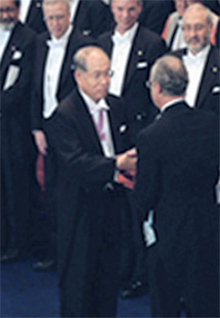
You can find detailed biographies on the following page.
Dr. Osamu Shimomura, 2008 Nobel Prize in Chemistry
The Royal Swedish Academy of Sciences awarded the 2008 Nobel Prize in Chemistry to Dr. Osamu Shimomura (Japan), Martin Chalfie (USA), and Roger Y. Tsien (USA) for the discovery and development of the green fluorescent protein (GFP), a tool now indispensable in biological and medical research. Dr. Shimomura first isolated GFP from the jellyfish Aequorea victoria and discovered that it emits green light when exposed to ultraviolet radiation. Dr. Chalfie demonstrated the utility of GFP as a tool in various biological studies, while Dr. Tsien contributed to the general understanding of GFP’s fluorescence mechanism and developed related proteins that emit colors other than green, enabling the simultaneous observation of multiple biological processes.
Dr. Shimomura was once quoted as saying, “I didn’t think it would be useful,” but the driving force behind his research was a sense of exploration and pure curiosity to unravel the mystery of bioluminescence in the jellyfish Aequorea victoria. However, the GFP he discovered has been applied to observe the movement of proteins within cells, becoming an indispensable tool that revolutionized life science research.
There are tens of thousands of proteins inside a cell, and distinguishing and observing the movements of individual proteins was once a challenging task. However, about 30 years after Dr. Shimomura’s discovery, the gene for GFP was identified, and using genetic engineering techniques, it became possible to attach GFP as a “tag” to other proteins of interest. By creating such “fusion proteins” in animal or plant cells, the green fluorescence of GFP serves as a marker, allowing the tracking of protein movements without damaging the cell. This mechanism has led to important medical insights, such as understanding how cancer cells spread and how nerve cells deteriorate in Alzheimer’s disease.
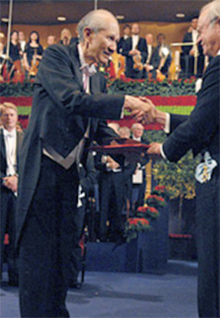
You can find detailed biographies on the following page.
- The Early Days
- Post-War to 1988
- Heisei 1 (1989) to the late Heisei era
13 + 9 – The Beginning of the Chemistry Department
In the 21st century, advancing the level of basic science is crucial, and there is also an expectation to generate a wide range of creative scientific technologies. The history of the Department of Chemistry at Nagoya University’s Faculty of Science began on April 1, 1942, with the establishment of three courses. The initial staff consisted of only 13 members, including Professor Yuji Shibata, Ken Sugawara, Yasuho Sano, Associate Professors Kazuo Yamazaki and Fujio Egami, Assistants Shun Mori and Yutaka Miyahara, five administrative and research support staff, and glassware specialist Toshio Ishiyama. When the department first recruited students, it received applications from nine students for a capacity of 15, and they became the first students of the Department of Chemistry at Nagoya University’s Faculty of Science.
In the preceding year, Yuji Shibata, Ken Sugawara, Yasuho Sano, and Kazuo Yamazaki had been involved in the establishment of the Chemistry Department as faculty members of the Faculty of Science and Engineering. However, due to the wartime conditions and the lack of communication with foreign countries, the establishment process was extremely challenging. For instance, obtaining back issues of academic journals required efforts such as going through antiquarian bookstores or relying on the generosity of individuals and other institutions for donations. It was only after such efforts that they were able to collect Chemical Abstracts (1907-1939), Journal of the Chemical Society (1878-1940), Angewandte Chemie (1888-1939), Zeitschrift für anorganische Chemie (1892-1922), and others. Additionally, because original books were unavailable, they sometimes had to purchase replica editions produced in Shanghai at the time.
One year later, in April 1943, due to the advancement of the academic year, two additional courses were added, completing the Chemistry Department. By the end of April 1944, the faculty members were finally appointed as follows.

Escalation of War – A Turbulent Era
However, the operation of the Chemistry Department at its inception faced numerous challenges. Due to the intensification of the Pacific War, the duration of student enrollment was inevitably shortened to two and a half years. The first batch of students graduated in September 1944. Due to the small number of graduating students, the graduation research achievements report meeting was held jointly by the Physics Department and the Chemistry Department.
As 1945 began, Nagoya became frequently bombed. Consequently, each laboratory had to evacuate to various locations in Nagano Prefecture, such as Matsumoto High School and Ueda Textile Technical School. While lectures continued at the evacuation sites, research activities were almost entirely suspended. Despite the extremely difficult circumstances during the wartime, fortunately, there were no casualties among the members of the Chemistry Department due to air raids. By the end of October 1945, everyone safely gathered in Higashiyama, and lectures finally resumed on November 12th.
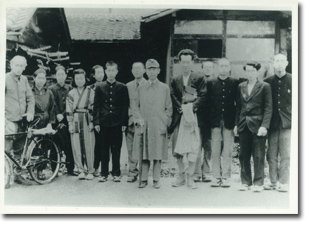
Transition Period for the Chemistry Department: Embracing Both Education and Research
As the post-war period was gradually stabilizing, the Chemistry Department entered a period of transition. In December 1948, Yuji Shibata, who was at the forefront of establishing the Chemistry Department and served as its first Dean of the Faculty of Science, resigned and moved to Tokyo Metropolitan University. In 1949, Prof. Yonezo Morino of the Physical Chemistry Department transferred to the University of Tokyo, and in his place, Masaji Kubo, formerly a professor at Keijo University*1 who returned after the war and became a professor at the First High School*2, assumed the position.
In addition, in April 1954, the Biochemistry Department was established as the sixth department. Prior to this, the area of chemistry handled by Professor Fujio Egami, who was responsible for the Organic Chemistry Department, was actually biochemistry. With the assistance of Associate Professor Yoshimasa Hirata, who specialized in organic chemistry, the department was effectively operated as two research laboratories. The long-standing desire to separate this into two departments was finally realized with the understanding and support of President Katsunuma*3. Hirata was promoted to professor of the Organic Chemistry Department, while Egami took charge of the Biochemistry Department.
In March 1953, a portion of the Faculty of Science Building A, a reinforced concrete building, was completed, and the Analytical Chemistry Department was the first to move in. The building was gradually expanded in small increments, and the departments were relocated one by one. Finally, in December 1957, with the relocation of the Biochemistry Department, the transfer of all departments was completed.
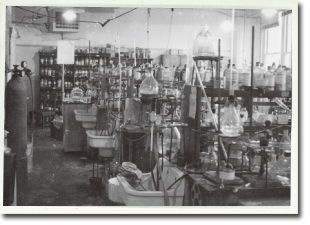
From the 1950s, research conditions gradually improved. In 1957, the British Hilger H800 infrared spectrophotometer was introduced, followed by the high-resolution nuclear magnetic resonance spectrometer from Nippon Electronics Corporation in 1958. Subsequently, mass spectrometers, optical rotation dispersion, and circular dichroism spectrophotometers, among other electronic analysis devices, were purchased through various research grants. The introduction of these instruments brought groundbreaking developments to various fields of chemistry. They allowed for the measurement of the physical and chemical properties of molecules, providing detailed and accurate insights into compound identification and molecular structure determination that were previously unattainable. Thus, after more than a decade since the end of the war, the two pillars of university organization, “education” and “research,” were finally established.
In 1958, Eto, who was in charge of the biochemistry course, was transferred to the University of Tokyo. However, he continued to serve as a concurrent professor for the course until September 1960. During the selection process for Eto’s successor, the first personnel committee was established. A year later, in October 1961, following the procedures outlined by the personnel committee’s regulations, Suzuki, an associate professor in the Faculty of Liberal Arts at Nagoya University, transferred to the Faculty of Science and took over as the professor in charge of the biochemistry course. Additionally, from October 1960 for one year, Igusa of the Faculty of Agriculture served as a concurrent professor of biochemistry.
“The Second Department of Chemistry” – Expanding from 6 to 9 Chemistry Courses
In March 1963, Professor Ken Sugawara, one of the original professors, retired, and Associate Professor Motoharu Tanaka was promoted to fill the position. Around this time, plans were being made to establish a second Department of Chemistry to accommodate the expansion of research fields and the increasing number of students. It wasn’t until 1964 that this plan came to fruition with the addition of three new courses and an increased student capacity of 50.*4
In March 1965, Dr. Jiro Tanaka, who had been an assistant professor at the Institute for Solid State Physics at the University of Tokyo, joined the newly established seventh course (Solid State Chemistry Course) as an associate professor, and the following April, he was promoted to professor. Subsequently, in January 1967, Hideo Yamadera, who had been a professor at Rikkyo University, joined as the professor of the eighth course (Isotope Chemistry Course). Furthermore, in February 1968, Ryoji Noyori joined as an associate professor of the ninth course (Organic Reaction Chemistry Course) from Kyoto University, and he was promoted to professor in August 1972. While these additions increased the number of courses, having nine courses was relatively small for a comprehensive university, and a second expansion was desired.
As the new courses began to flourish, in March 1972, Professor Tamotsu Sano, one of the founding professors, retired, followed by the retirements of Professors Kazuo Yamazaki and Shoji Kubo in March 1974. Dr. Kazuo Ikeda was promoted to replace Professor Sano, and Dr. Junnosuke Fujita, who had been an assistant professor at Tohoku University, was appointed as the successor to Professor Yamazaki. Dr. Masao Nakamura was promoted to replace Professor Kubo.
Establishment of Building A2 – Maturity of the Department of Chemistry
Building A2 was newly constructed, and the student laboratories, Inorganic Chemistry, Organic Chemistry, and Reaction Organic Chemistry courses were relocated here. The student laboratories, which had previously been divided into two rooms, were consolidated into one room to better align with the curriculum.
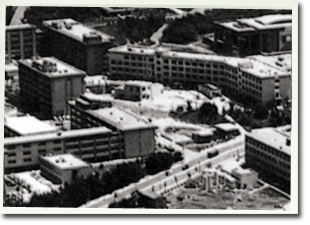
In March 1979, Prof. Yoshimasa Hirata retired, and Associate Prof. Shizuyuki Yamada was promoted to succeed him. Additionally, in 1978, a new program was established within the Graduate School of Science, called the Department of Space Molecular Chemistry, as part of the Space Science major. This department was practically operated under the Chemistry major, as agreed between the two majors. In 1980, Assistant Prof. Shuji Saito from the Molecular Science Institute was appointed as the responsible professor for this department.
In 1983, the Molecular Properties course, under the Big Lecture System of the General Education Department, was established, becoming part of the Chemistry major. In March 1987, Prof. Hideo Yamadera retired, and Prof. Osamu Yamauchi from Kanazawa University School of Pharmacy was appointed as his successor.
Although the student capacity of the Chemistry Department had been increased to 50 in 1964, around this time, pollution became a serious social issue. As chemistry was seen as a contributing factor to pollution, the number of students aspiring to study chemistry drastically declined. This trend continued even after pollution problems were somewhat resolved. However, in 1981, the curriculum for high school education was revised. As students who followed this curriculum entered university from 1984 onwards, there was a rapid increase in the number of students aspiring to study chemistry. Furthermore, due to an increase in the population of school-age children, an exceptional increase in student capacity was implemented from 1987, following the request of the Ministry of Education. The student capacity of the Chemistry Department increased to 55 in that year and finally to 60 in 1988.*5
*1 Keijo University: Established in 1924 (Taisho 13) as the sixth Imperial University, the only old system university in Korea under Japanese rule, located in Keijo, Gyeonggi Province, Korea (now Seoul Special City).
*2 The First Higher School: The old system high school that served as the predecessor to the University of Tokyo’s College of Arts and Sciences, Chiba University’s School of Medicine, and its School of Pharmacy.
*3 Seizo Katsunuma: The third President of Nagoya University.
*4 The actual establishment of new courses took place in the following year and beyond.
*5 The number of student slots returned to 50 in 1998.
The beginning of the Heisei era marks the end of the 20th century. And then, the Nobel Prize in Chemistry.
With the advent of the Heisei era, the environment surrounding universities began to change significantly, with reforms in university and graduate school organization, educational practices, and the introduction of self-assessment and external evaluation systems for research and education. For the Chemistry Department, this period was marked by a generational turnover in almost all laboratories, making it a period of significant change.
In March 1989, Professors Motoharu Tanaka and Osamu Suzuki retired. Associate Professor Shigenobu Funahashi was promoted to succeed Tanaka in April 1990. Toshiya Endo, who was an associate professor at Gunma University, joined as an assistant professor in charge of Suzuki’s position in December 1989 and was promoted to professor in May 1991. In February 1991, Daio Nakamura, who had been on sick leave, passed away. In April of the same year, Kazuhiko Seki, who had been an associate professor at Hiroshima University, joined as a professor in charge of the Solid State and Thin Film Physics Laboratory.
In March 1993, Professors Jiro Tanaka, Katsuichi Ikeda, and Junnosuke Fujita retired. In April of the same year, Hisanori Shinohara, who had been an associate professor at Mie University, joined as a successor to Ikeda. Gan Omori, who had been an associate professor at the Institute for Molecular Science, succeeded Tanaka, and Kazuyuki Tatsumi, who had been an associate professor at Osaka University, succeeded Fujita, both joining in April 1994.
From the academic year 1993, the university education system abolished the traditional liberal arts department system and shifted to a four-year integrated education system.
In April 1995, the Graduate School was reorganized, transitioning from the previous Faculty of Science faculty organization to the Graduate School of Science. As part of this reorganization, a new department was established. From the perspective of creating new materials and functions, all laboratories in the Department of Chemistry, as well as the laboratories in the Department of Physics specializing in condensed matter physics and biophysics, were integrated to create the Materials Science Program. Faculty members in the chemistry department belong to the Graduate School of Science and are responsible for the research and education of the Materials Science Program in chemistry, as well as the education in the Department of Chemistry in the Faculty of Science. The chemistry department was reorganized into four major courses in the Graduate School of Science: the Inorganic and Analytical Chemistry Course, the Organic and Bioorganic Chemistry Course, the Physical Chemistry of Materials Course, and the Coordination Chemistry Course.
Associate Professor Michiaki Furukawa of the Inorganic Chemistry Laboratory was promoted to full professor and became the head of the newly established Coordination Chemistry Course. He retired in March 1997. In April 1995, a core research center formation program led by Professor Ryoji Noyori, called the Center of Excellence (COE) program, began and continued until March 2002. During this time, the excellent results of the COE program led to the establishment of the International Research Center for Materials Science in 1998.
In 2000, the Materials Science Program was selected for the first time for the Education and Research Center Formation Support Grant (Education COE), leading to the establishment of a commendation system for outstanding research achievements by graduate students and the enhancement of library resources. On the other hand, in March 2000, Prof. Osamu Yamauchi retired, and Prof. Yoshito Watanabe, a professor at the National Institute of Genetics, Integrated Bioscience Center, Molecular Science Institute, became a concurrent professor in April 2001 and a full-time professor the following year. In April 2001, Prof. Kunio Awaga, who had been an associate professor at the University of Tokyo, joined as a professor in the Molecular Functional Chemistry Laboratory in the Coordination Chemistry Course. In December of the same year, Professor Ryoji Noyori of the Department of Chemistry at Nagoya University became the second Japanese recipient of the Nobel Prize in Chemistry, following Kenichi Fukui of Kyoto University, and the first for Nagoya University.
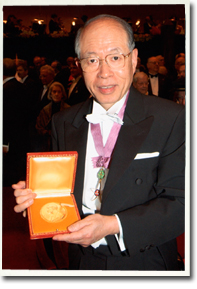
Dynamic Chemistry Department – Towards Representing Japan’s Premier Chemistry Department
In 2001, the Chemistry Department became the focal point of attention following Professor Noyori’s Nobel Prize win, marking the beginning of a new era. In 2002, the department was selected for the 21st Century COE Program, leading to the establishment of various support systems for doctoral students. From the 2007 academic year, the department has been actively engaged in the Global COE Program “Formation of International Education and Research Centers for Molecular Functional Materials Science.” In this way, the department’s laboratories have steadily advanced in both research and education, achieving a top-class research and educational environment domestically and internationally.
I will explain the flow of the Nagoya University Chemistry Department after 2002. In 2003, the Noyori Memorial Hall for Chemistry, commemorating the Nobel Prize in Chemistry, was established. Associate Professor Shigehiro Yamaguchi from Kyoto University joined the department, later promoted to professor as Noyori’s successor, while Noyori became a special professor at Nagoya University. Subsequently, Professor Shigenobu Funahashi retired, and in 2007, Associate Professor Kentaro Tanaka (Molecular Organofunctional Chemistry Laboratory) from the University of Tokyo joined as a professor in the Analytical Chemistry Laboratory. In 2007, Professor Daisuke Kamimura retired, followed by Professor Iwao Omine in 2008, and sadly, Professor Kazuhiko Seki passed away suddenly in 2008. In 2008, Professor Kenichiro Itami (Organic Chemistry Laboratory) joined, followed by Professor Akihide Hishikawa (Photochemical Physical Chemistry Laboratory) in 2010, and the department’s first foreign professor, Professor Eré Stéphan (Quantum Chemistry Group), joined in 2011. In 2007, the department was selected for the continuation of the 21st Century COE Program, now the GCOE Program, enabling the realization of international chemistry research and education.
In 2008, Dr. Shu Kobayashi, who obtained his Ph.D. from the Department of Chemistry, was awarded the Nobel Prize in Chemistry, becoming the second Nobel laureate from the department. The stage for research also underwent significant changes. Due to seismic retrofitting work that began in 2008, the Chemistry Department was forced to conduct research in temporary evacuation spaces. However, in 2011, the new Rino building, housing the Faculty of Science and some departments of the Faculty of Agriculture, was established. This provided the Chemistry Department with state-of-the-art facilities where research and educational activities could be conducted in a centralized manner. Thus, in the 21st century, the Department of Chemistry at Nagoya University underwent a complete transformation. It now aims to become a leading department in Japan and the world, marking the beginning of its third generation.
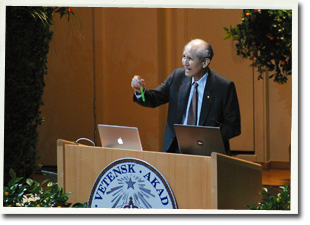
Center of Excellence (COE) Program: This program, initiated by the Ministry of Education, Culture, Sports, Science and Technology (MEXT), aims to support cutting-edge academic research by selecting research organizations suitable as centers for such activities. It is a highly competitive program, with only six projects selected out of 194 applications from various fields of study, including both natural and social sciences. In the field of chemistry, only one project is selected nationwide, highlighting the rigorous selection process.
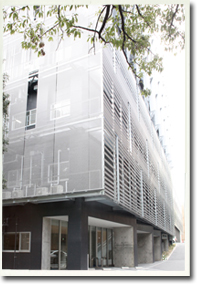
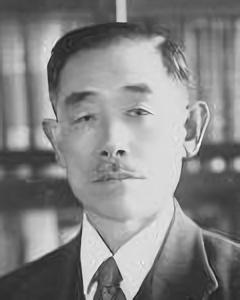
1962 - Commendation for Science and Technology by the Minister of Education, Culture, Sports, Science and Technology for "Cultural Merits."
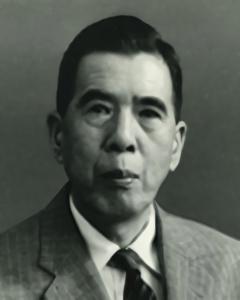
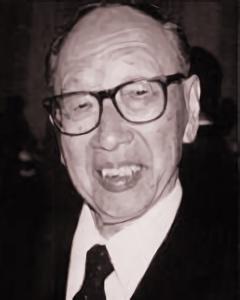
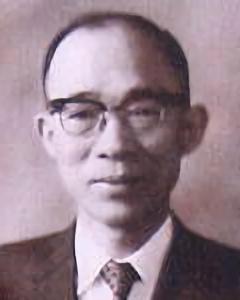
1981: Commendation for Cultural Merits
1992: Order of Culture
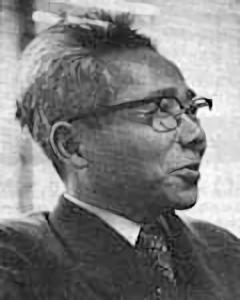
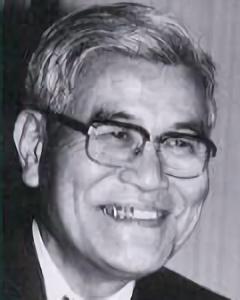
1990: Commendation for Cultural Merits
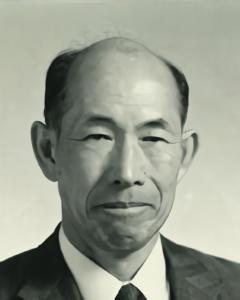
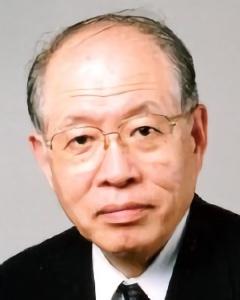
1998: Person of Cultural Merits award (Japan)
2000: Order of Culture (Japan)
2001: Nobel Prize in Chemistry
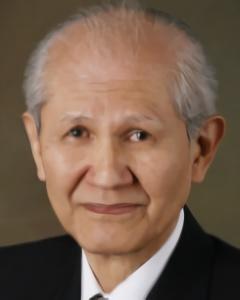
2008 Cultural Merit Award
2008 Order of Culture
